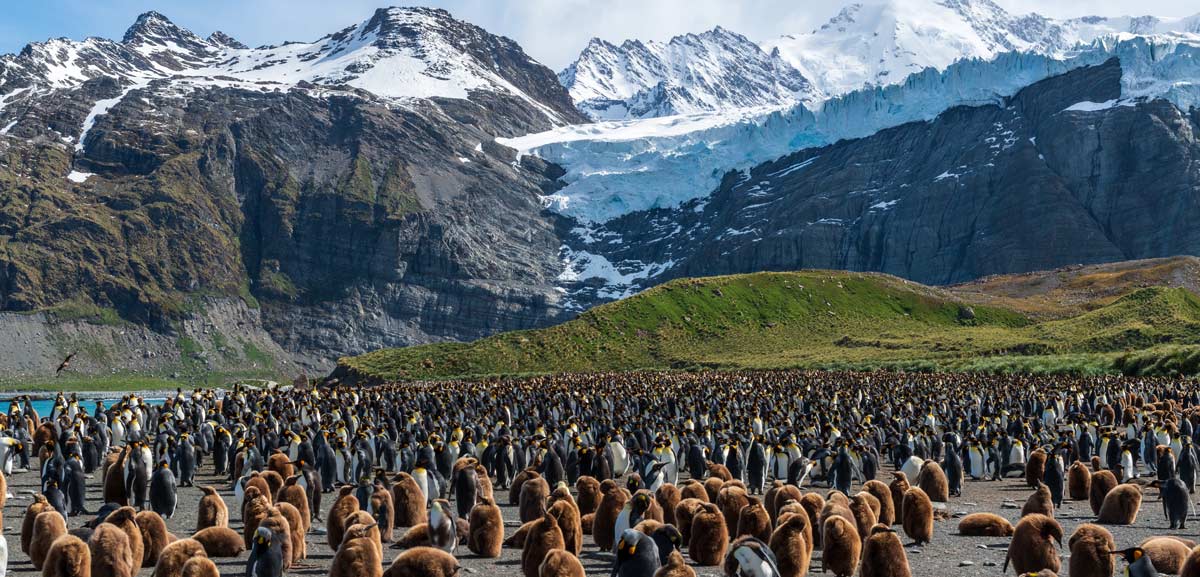
Editor’s Note: We’re all dreaming of travel ahead. Here’s some inspiration for future adventures. We share places, products and activities we recommend. If you make a purchase using a link on our site, we may earn a commission.
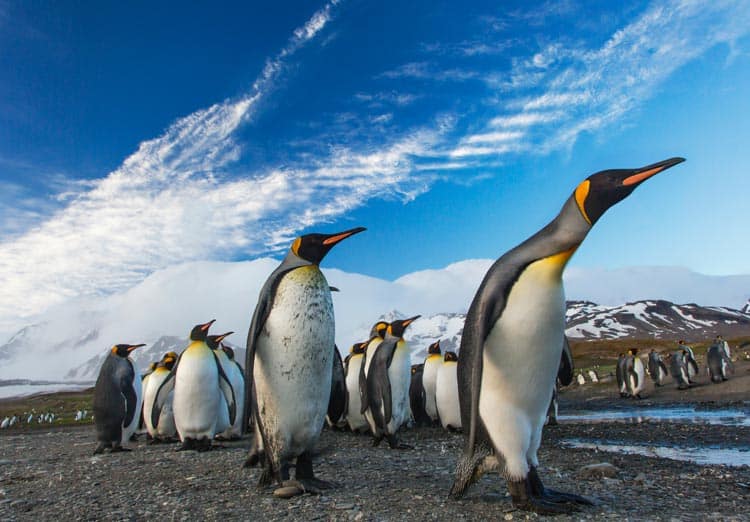
South Georgia Voyage
Icy sprays of water hit my face as Cameron, our Zodiac driver, zips across the frigid sea toward the shore of St. Andrews Bay on the subantarctic island of South Georgia, in the southern Atlantic Ocean about 1,700 miles (2,735 km) east of Argentina’s southernmost tip.
Bundled up in our red rain and wind gear, 10 of us clutch the ropes on the sides of our Zodiac (a motorized inflatable boat) as we head toward shore. Our ship, the Akademik Sergey Vavilov/Peregrine Voyager, a Russian research vessel transformed into a 100-passenger ship with a strengthened hull adapted to ice-breaking for its journeys to Antarctica, waits for us in a sheltered harbor.
“Check out our greeting party,” our driver says, pointing ahead. “I’ll get us around the seals in the water, but watch out; the male teenage fur seals tend to be grouchy. If they hassle you, clap your hands and they’ll move.”
Through misty sprays of arctic water, I see densely packed humps of dark-brown boulders cluttering the shoreline. As we get closer, I realize the boulders are southern fur and southern elephant seals, hundreds and hundreds of them.
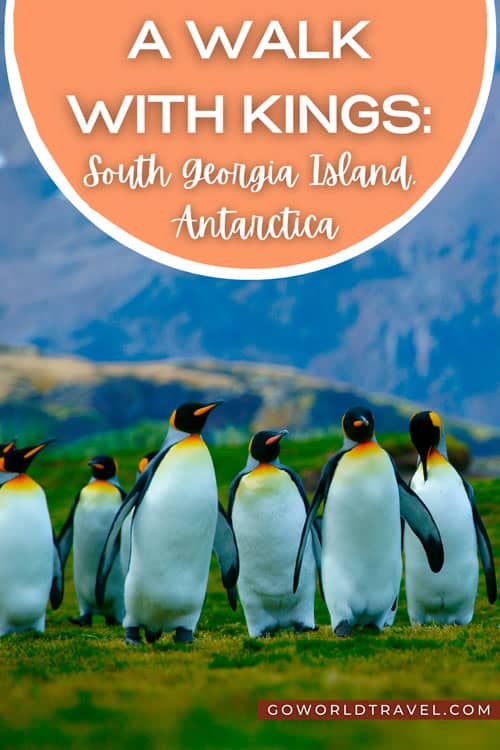
King Penguins
Groups of seals lounge on the sand belching loudly and tossing sand with their flippers; others sun themselves on rocks jutting from the water, while others swagger about, sentinels guarding their harems.
We land on a gray-black, sandy beach under the watchful eyes of the seals. A welcoming committee of about 200 king penguins struts over to us.
We’re surrounded by three-foot-tall (1 m), white-breasted, orangey-gold throated, black-and-gold headed penguins.
Three of the penguins follow me as I negotiate around bull elephant seals as large as a car. The seals eye me warily with watery, bloodshot eyes when my penguin groupies and I go by.
It’s good to be on land again after spending two days crossing the Antarctic Convergence from the Falkland Islands. The Atlantic, Pacific and Indian oceans meet, mix and merge in the Southern Ocean, the circumpolar sea that isolates Antarctica from the other continents.
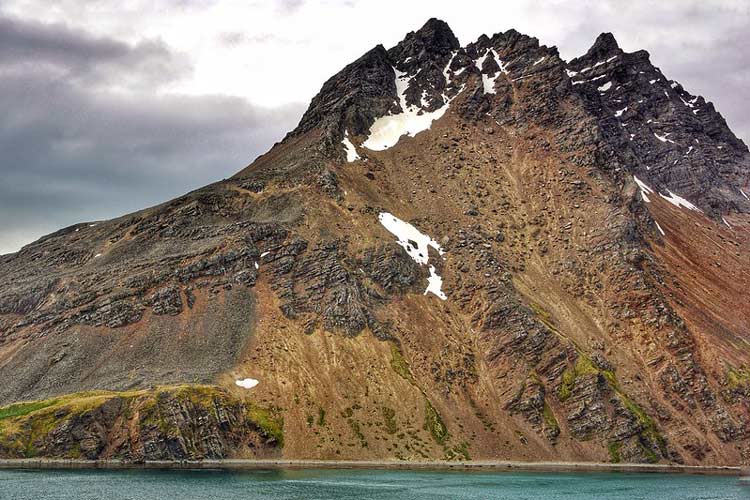
South Georgia Island shines in the Southern Ocean like crystal, its ice fields and glaciers tumbling into valleys below two mountain ranges, Allardyce and Salvesen. Permanent snow and ice blanket much of the island.
Steep, jagged cliffs and small, rocky islands dot the coast. There are no roads or airports here. The only way to get to South Georgia Island is by sea, and that can be a treacherous journey, as many early explorers discovered.
I’m here in late January, during austral, or southern, summer, a season that starts in November and ends in late February or early March. The sun finally emerges from the long winter night, the sea ice melts, and the breeding season begins. Streaks of gold and pink fire up the sky, creating pastel swirls that filter into my cabin at 3:30 in the morning and at night as late as 11:30.
The weather is less harsh at this time of year than in the winter months when the island is blanketed with snow drifting out to the sea. It’s a time when young chicks, birds, seals and other wildlife are introduced to the “real world” and the bays of the subantarctic islands become giant nurseries.
Today, it’s a balmy 46° F (8° C) on land and I am puffed out and warm in my waterproof parka and pants.
Although South Georgia Island is isolated, it’s an oasis for wildlife breeding. More than 2 million southern fur seals — 95 percent of the world’s population of them — come here for their summer vacation. Not to be outdone, about half the world’s population of southern elephant seals — approximately 300,000 — join them.
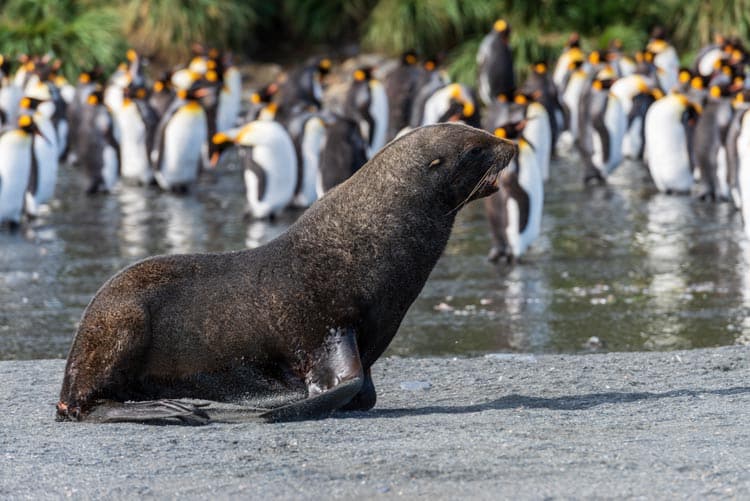
South Georgia Island Companions
Rounding out the fun, thousands of pairs of king penguins flit and shuffle among the giant seals and their pups. More than 100,000 pairs of white “ear muffed” gentoo penguins build nests of tussock grass, a native grass that reaches 6 feet high. Macaroni penguins, 5 million pairs, with yellow-orange tufts of feathers sprouting from the fronts of their heads, hide on steep slopes that drop down to the sea.
As my three companions and I walk inland, a cacophony of deafening shrieks, grunts and whistles pierces the air. Blades of tussock grass sway in the breeze; snowy valleys are riddled with ponds and rivulets; and tall mountain peaks with glaciers, ice and snow form the backdrop.
The landscape is speckled with thousands of preening, parading, adult king penguins, their golden throats iridescent in the sunlight. The birds are everywhere: on the far hillsides, on ragged rocks near me, in the valleys and in the glacial streams. Molting chicks, furry and brown, nestle in between adults.
Bits of fuzzy down that the chicks have shed drift in the wind and collect on the rocks. “Eau d’penguin,” like the odor of musty, decaying compost, fills the air and accosts my senses.
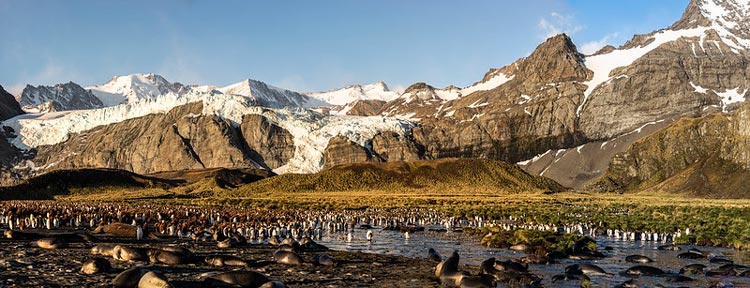
I sit on a rocky hill, set my backpack on the ground and wait. Three penguins are curious about my backpack. One saunters over and pecks, pecks, pecks at it with its black beak: rat-a-tat-tat, like a jackhammer. The others watch. Nothing happens, so he pecks at my shoes.
Finally, perhaps bored or disappointed, he and his friends leave. I also leave, picking my way through the penguins to the Zodiac. A pair of king penguins follow me to the shore as if to bid me farewell. As we leave South Georgia Island, the sky is a purple, pink and blue kaleidoscope of colors. Billowy clouds resembling outstretched angel wings float in the distance.
“These are lenticular clouds that form when masses of air or strong winds flow over rugged terrain,” Cameron says.
“They move very slowly and often are shaped like lenses; sometimes they even look like UFOs.”
Motoring away, we watch until the clouds dissipate over the landscape and the penguins become pepper on a crumpled sheet of paper, then disappear.
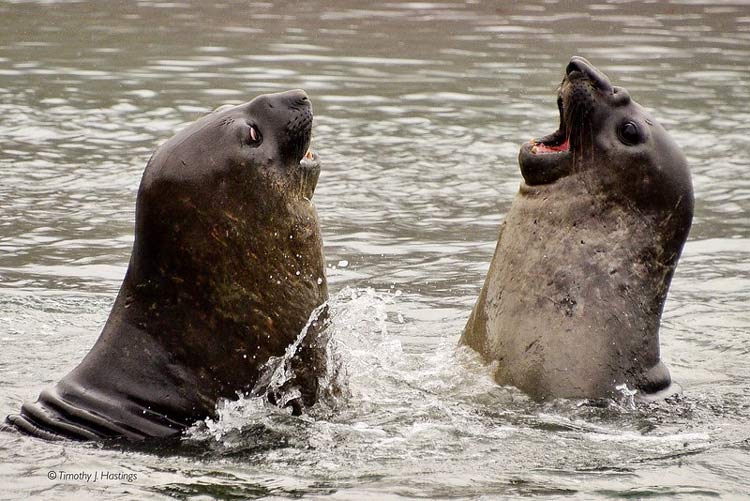
If You Go
Peregrine Adventures
[email protected]
www.peregrineadventures.com
Peregrine Adventures offers several trips to South Georgia Island, the Falkland Islands and Antarctica. The 17-day Antarctica and South Georgia journey we took started at $6,490 per person. You will need to spend a night in Buenos Aires prior to your departure for Ushuaia, Argentina, where most of the expeditions to Antarctica begin.
Other companies that offer small-ship (48-120 passengers) Antarctic expeditions include:
Quark Expeditions
www.quarkexpeditions.com
Lindblad Expeditions
www.expeditions.com
Aurora Expeditions
www.auroraexpeditions.com.au
- How to Get Around in Sydney: A Local’s Guide to Traveling Around Sydney - April 24, 2024
- The Low-Key Magic of Ghent, Belgium - April 22, 2024
- Discover the Hidden Charm of Extremadura in Spain - April 20, 2024
